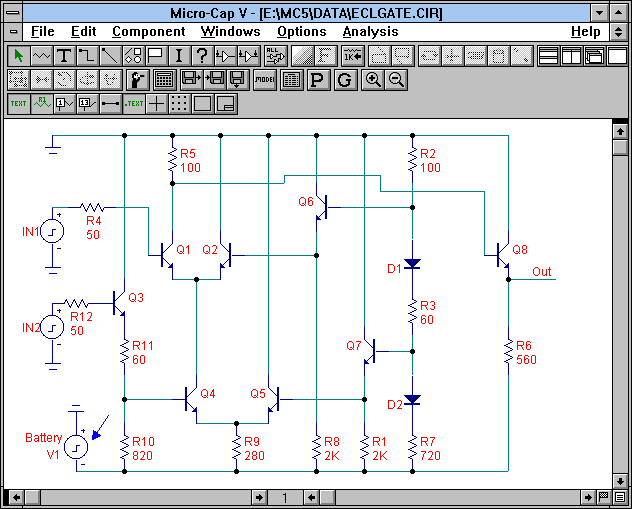|
|
 |
Tolerancing a Battery
For Monte Carlo analysis, the only parameters that may be toleranced are those that appear within a model statement. One component that sometimes needs to be toleranced is a battery. The battery, however, only uses a Value attribute. The way to get around this is to use a pulse source to represent a battery.
The pulse source is defined as a two level voltage source. The VZERO parameter defines the zero level, and the VONE defines the one level. The value of the battery should be placed in the VZERO parameter. The only important timing parameter for this case is P1. This is the time at which the pulse source begins to rise to its VONE level. Therefore, the value of the pulse source will be VZERO until time is equal to P1. If P1 is greater than the simulation time then the voltage will be a constant VZERO for the entire simulation, mimicking a battery. Since VZERO is a model parameter, a Lot or Dev statement may be placed after it to give it a tolerance. The other parameters of the pulse source may be any values as long as they follow the rule:
P1 < P2 < P3 < P4 < P5
|

|
The figure above displays the sample circuit ECLGATE.CIR in which a pulse source has replaced the battery. In this circuit, the pulse source is representing a -6V battery. Note the orientation of the pulse source. The following model statement was used.
.MODEL BATTERY PUL (VZERO=6 LOT=10% VONE=0 P1=10 P2=11 P3=50 P4=51 P5=100)
This places a 10% tolerance on the 6V value. A Monte Carlo analysis may now be run on this circuit.
The figure below displays the results of a 100 run Monte Carlo analysis. The time range for this simulation was 20ns which falls well within the range of 10s set by the P1 parameter.
|
|
|
|
|






